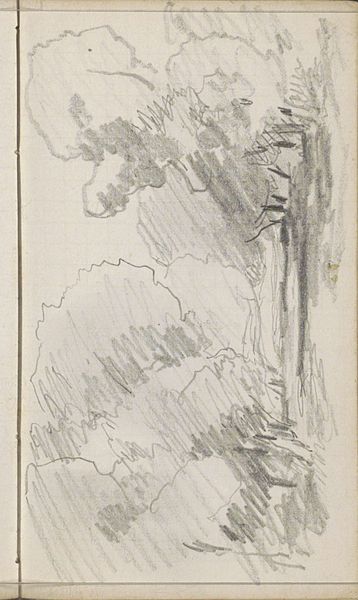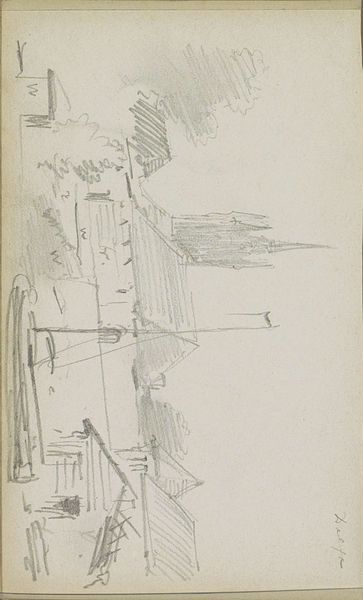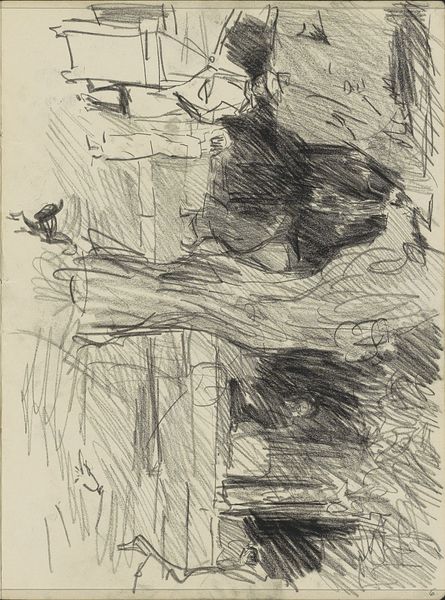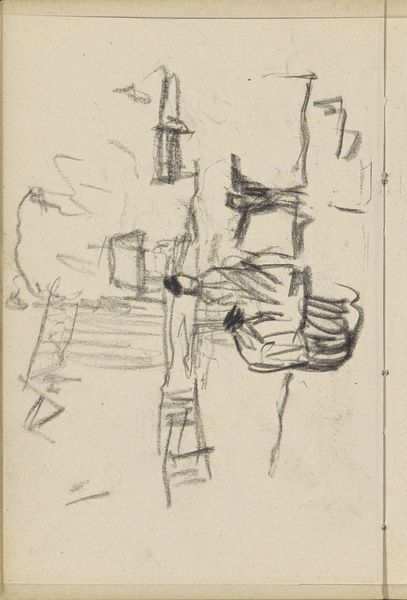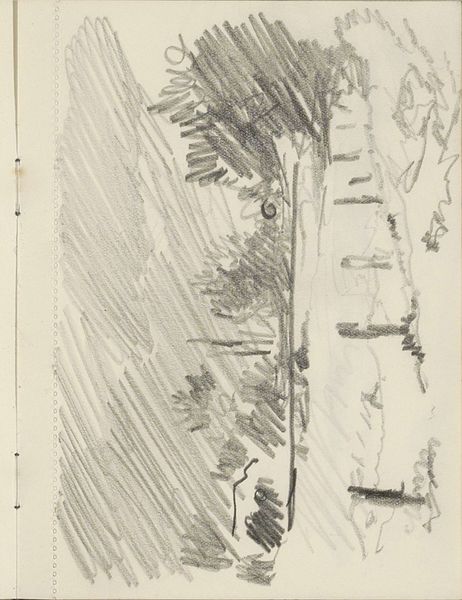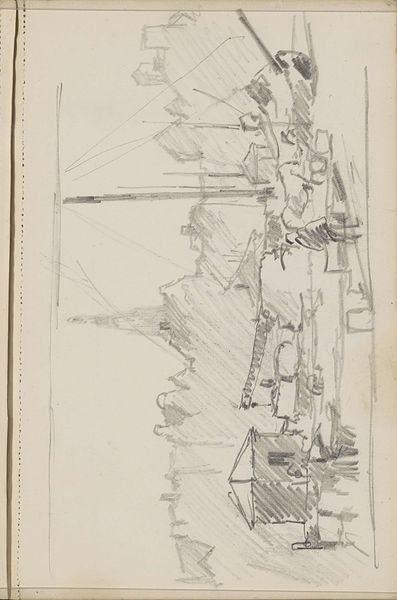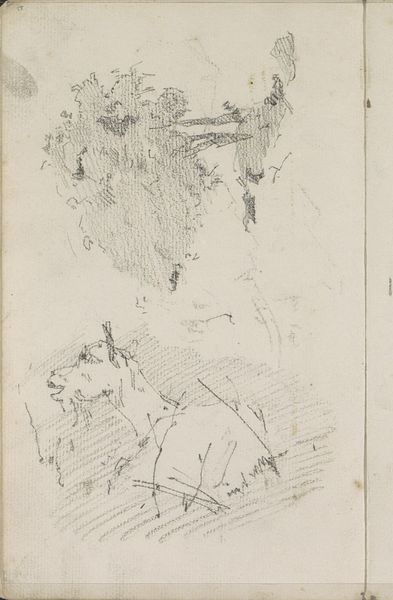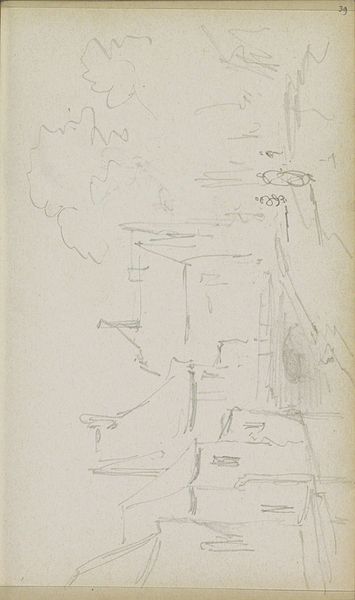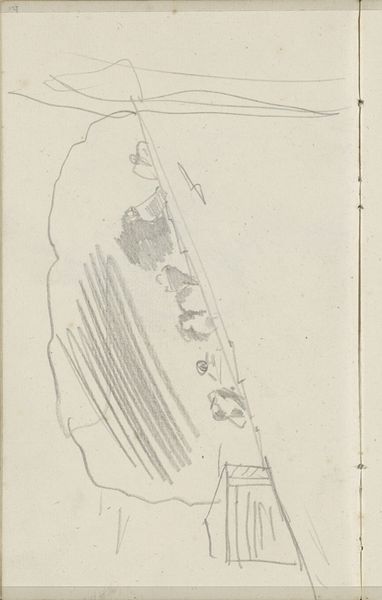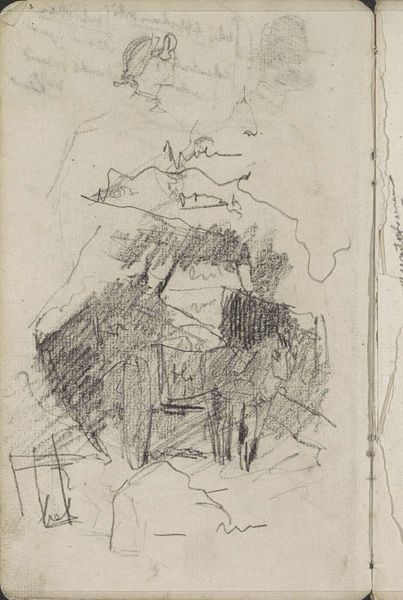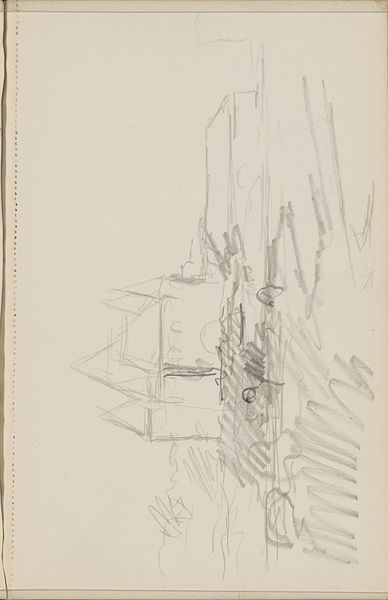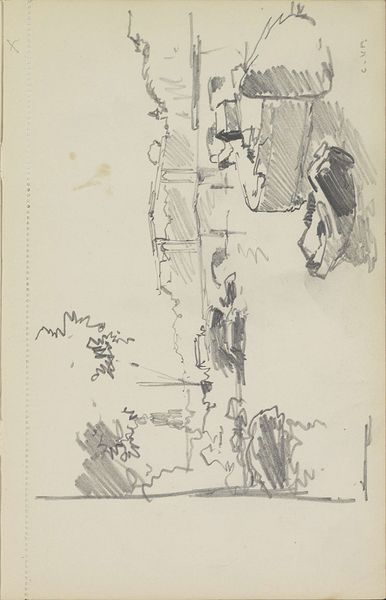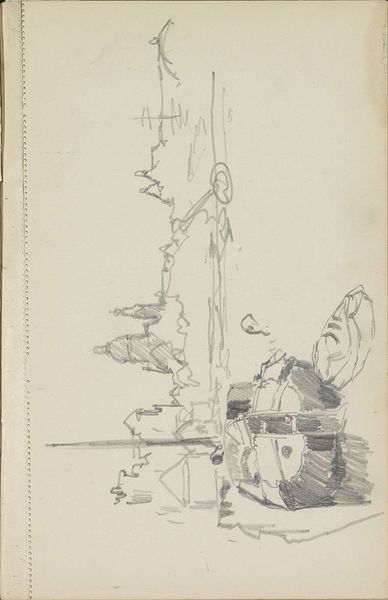
Twee voor een wagen gespannen paarden op een straat 1890 - 1946
0:00
0:00
cornelisvreedenburgh
Rijksmuseum
drawing, pencil
#
drawing
#
pencil sketch
#
landscape
#
pen-ink sketch
#
pencil
#
realism
Copyright: Rijks Museum: Open Domain
Curator: Here we have "Two Horses pulling a Wagon on a Street" by Cornelis Vreedenburgh, likely created between 1890 and 1946. It's a pencil drawing currently held in the Rijksmuseum. What catches your eye first? Editor: Immediately, its ethereality. There’s an impermanence here, a fleeting glimpse. It feels less about documenting and more about… sensing. Almost melancholic, wouldn’t you say? Curator: Yes, there’s definitely a muted quality to the work, isn't there? You know, I am quite fascinated by Vreedenburgh's realism style in his pencil sketches. This piece offers such interesting insights. The artist focuses on landscape composition using loose strokes and shadowy details. There’s also this remarkable, underlying social context. I mean, just observe the presence of horses in relation to human existence within a quickly urbanizing world. How do you respond to that? Editor: Precisely. The horse, not merely an animal, but a symbol of labor, pre-industrial toil. Its looming size in comparison to the wagon raises considerations about labor divisions based on class during industrial shifts, the very real burden of "progress" weighing upon these beasts of burden. Curator: And Vreedenburgh captured this essence in his style, don’t you agree? The looseness prevents it from becoming romantic or glorifying – which leads me to consider that perhaps he wanted to represent working class life with respect for their circumstances at the time. Editor: Or even with concern. Looking closely at how the wagon at the lower register is depicted. Its lines and shapes do not suggest much life or substance to it, I am sensing there is much absent there. The structure might simply indicate absence in other life dimensions for the ones working there, in relationship to a quickly forming capital society. It's also difficult for me not to approach this viewing through the lens of ecofeminism too; in other words, how the domination of both woman and non-human animals mirror one another under patriarchal societies... Curator: It’s fascinating how you situate Vreedenburgh's sketches through contemporary feminist theory! The muted grey tones lend an undeniable weight to these visual narratives, an exploration into what it really meant, back then and maybe even now, for marginalized communities. It really makes you wonder about the purpose and position of working class in present times... Editor: Absolutely! "Two Horses pulling a Wagon on a Street" encapsulates so much. The drawing stands not merely as documentation of horses and wagons in history, but rather a subtle reflection that carries great resonance to our understanding of society then and now, gender, and the role that intersectional narratives carry with them throughout history. Curator: Agreed. It definitely moves beyond a mere depiction to trigger in depth cultural questions that transcend beyond the artwork in and of itself.
Comments
No comments
Be the first to comment and join the conversation on the ultimate creative platform.
